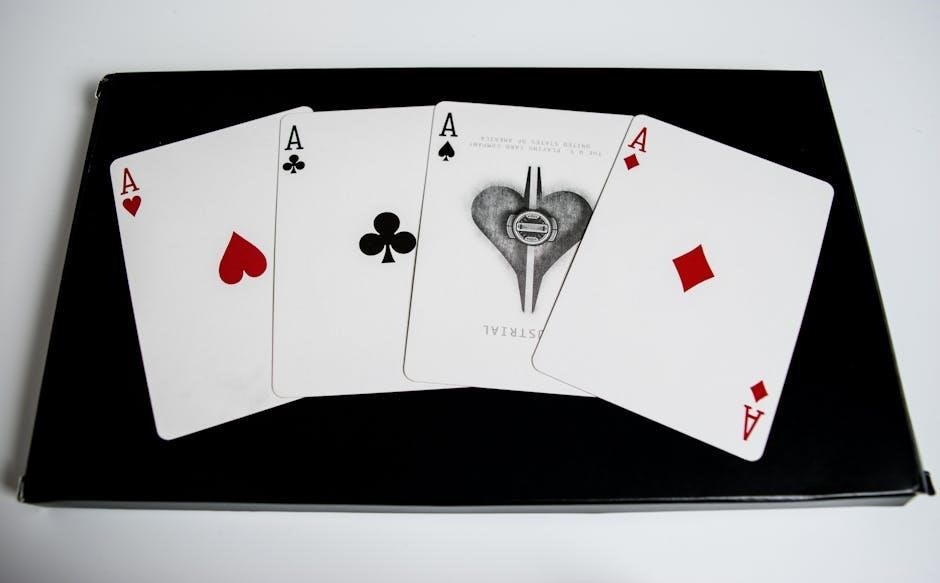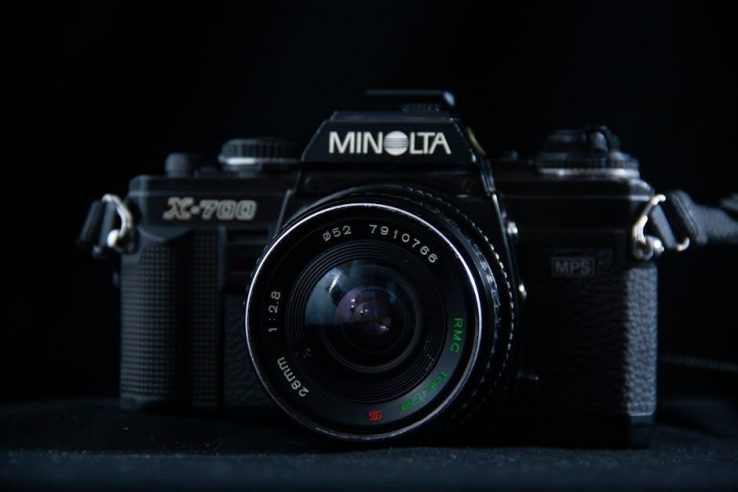Proper fit is crucial for comfort and clarity. Oakley offers various goggle models, and this guide helps you choose the right size for optimal performance and comfort on the mountain.
Why Proper Goggle Fit Matters
A proper fit ensures comfort, clear vision, and optimal performance. Ill-fitting goggles can cause discomfort, fogging, or limited peripheral vision, compromising your experience. A snug yet comfortable fit prevents shifting, allowing you to focus on your activities without distractions. Oakley goggles are designed to provide clarity and protection, but only when sized correctly. Proper fit enhances safety, functionality, and overall satisfaction, making it a critical factor in choosing the right pair for your needs.
Overview of Oakley Goggle Models
Oakley offers a diverse range of goggle models, each designed for specific needs. The Flight Deck, Line Miner, and Fall Line series are popular choices, catering to different face shapes and preferences. These models vary in lens size, shape, and features like prescription compatibility and adjustable straps. Whether you prioritize peripheral vision, style, or functionality, Oakley’s lineup ensures there’s a goggle to suit every skier or snowboarder, providing clarity and comfort in various conditions.
How to Choose the Right Size for Your Needs
Choosing the right Oakley goggle size involves measuring your head circumference and considering your face shape. Use Oakley’s size chart to match your measurements with the appropriate goggle size. Ensure the goggles fit snugly but comfortably, avoiding pressure points. If you wear a helmet, check compatibility to maintain proper fit and safety. Proper sizing ensures clear vision, comfort, and optimal performance on the slopes.

Understanding Face Shapes and Goggle Compatibility
Understanding face shapes is key to goggle compatibility. Oakley models cater to round, oval, square, and heart-shaped faces, ensuring optimal fit and comfort.
Determining Your Face Shape
To determine your face shape, measure your face’s length and width. Round faces have full cheeks with similar length and width. Oval faces are longer than wide, with balanced proportions. Square faces have a strong jawline and equal length and width. Heart-shaped faces have a broader forehead and temples, narrowing at the chin. Understanding your face shape is crucial for selecting compatible Oakley goggles, ensuring a comfortable and secure fit.
Matching Goggle Size to Face Shape
Round faces benefit from taller, narrower goggles like Oakley Flight Deck, which elongate the face. Oval faces suit medium sizes with balanced proportions, such as Oakley Line Miner. Square faces pair well with goggles that soften sharp angles, like Oakley Fall Line. Heart-shaped faces find comfort in wider frames that distribute pressure evenly. Matching goggle size to face shape ensures optimal comfort, peripheral vision, and a secure fit, enhancing performance on the mountain.
Common Mistakes in Sizing
One common mistake is guessing your size instead of measuring. Overlooking face shape can lead to poor fit, while not considering helmet compatibility often causes discomfort. Ignoring pupillary distance (PD) measurements can compromise lens alignment. Assuming all Oakley models fit similarly is another error. Lastly, not trying goggles before buying can result in a mismatch. Avoiding these mistakes ensures a comfortable, secure, and high-performance fit tailored to your needs.

Oakley Goggle Size Chart Breakdown
Oakley goggles come in small, medium, and large sizes, with specific measurements varying by model. This section simplifies the chart to help you find the perfect fit.
Small vs. Medium vs. Large Sizes
Oakley goggles are categorized into small, medium, and large sizes to accommodate various face shapes and preferences. Small sizes offer a snug fit for narrower faces, while medium sizes are the most popular, fitting a wide range of users. Large sizes provide extra coverage and comfort for those with broader features. Each size ensures optimal vision and comfort, tailored to individual needs on the mountain.
Specific Measurements for Popular Models
Popular Oakley models like the Flight Deck, Line Miner, and Fall Line have distinct measurements. The Flight Deck offers a wide field of view with a medium fit, suitable for most face types. Line Miner is slightly more compact, ideal for smaller faces. Fall Line provides a balanced fit with adjustable features. Each model’s dimensions are designed to optimize comfort and visibility, ensuring a precise fit for different skiing and snowboarding needs.
How to Measure Your Head Circumference
To ensure the best fit, measure your head circumference just above your eyebrows and around the widest part of your head. Use a flexible tape measure or a string, then compare it to Oakley’s size chart. Keep the tape level and snug but not too tight. If your measurement falls between sizes, opt for the larger size for optimal comfort. Accurate measurements help avoid issues like too-tight or loose-fitting goggles, ensuring a secure and comfortable fit for skiing or snowboarding.

Popular Oakley Goggle Models and Their Sizes
Oakley offers top models like Flight Deck, Line Miner, and Fall Line, each with specific size options to fit various face shapes and preferences for secure comfort.
Oakley Flight Deck Goggle Sizes
Oakley Flight Deck goggles are available in multiple sizes to accommodate different head circumferences and face shapes. The medium size is the most popular, offering a universal fit for average-sized faces. Larger sizes provide extra coverage for bigger heads, while smaller sizes ensure a snug fit for petite faces; Each size is designed to maintain optimal comfort and clarity, ensuring a secure seal around the eyes for excellent performance on the slopes.
Oakley Line Miner Goggle Sizes
Oakley Line Miner goggles are designed to fit a variety of face sizes, with options ranging from small to large. The medium size is ideal for most riders, offering a balanced fit. Larger sizes provide additional coverage for bigger faces, while smaller sizes ensure a snug fit for narrower faces. Each size is crafted to deliver exceptional comfort and clarity, with a focus on durability and performance for skiers and snowboarders seeking reliability on the mountain.
Oakley Fall Line Goggle Sizes
Oakley Fall Line goggles are available in small, medium, and large sizes to accommodate various face shapes and preferences. The medium size is the most popular, offering a universal fit for average face dimensions. Larger sizes provide extended coverage, while smaller sizes cater to narrower faces. Each size ensures a secure, comfortable fit with Oakley’s signature clarity and durability, making the Fall Line a versatile choice for skiers and snowboarders seeking reliable performance on the slopes.

Lens Size and Shape Considerations

Lens Size and Shape Considerations
Lens size and shape significantly impact peripheral vision and comfort. Oakley offers various lens dimensions and shapes to match different face types, ensuring optimal clarity and fit.
Understanding Lens Dimensions
Oakley goggles feature lenses with varying dimensions to suit different face shapes and preferences. Lens size affects peripheral vision, with larger lenses offering a wider field of view. Vertical and horizontal lens shapes cater to specific needs, ensuring proper fit and clarity. Oakley’s designs prioritize optical precision, while adjustable frames accommodate diverse head sizes. Understanding these dimensions helps users select goggles that balance comfort, performance, and personal style, enhancing their skiing or snowboarding experience.
Vertical vs. Horizontal Lens Shapes
Oakley goggles come in vertical and horizontal lens shapes, each catering to different face shapes and preferences. Vertical lenses are taller, providing enhanced peripheral vision, ideal for larger faces. Horizontal lenses are wider, offering a broader field of view, perfect for medium to smaller faces. Both designs ensure optical clarity and comfort, allowing users to choose based on their facial structure and performance needs for skiing or snowboarding.
How Lens Size Affects Peripheral Vision
Lens size significantly impacts peripheral vision, with larger lenses providing a wider field of view. Oakley goggles balance size and fit to ensure optimal clarity without compromising comfort. Proper fit prevents fogging and maintains lens integrity, while Oakley’s Prizm technology enhances visual acuity. Smaller lenses may reduce bulk but can limit peripheral vision, making them less ideal for high-speed activities. Choosing the right size ensures unobstructed views, crucial for performance and safety on the slopes. Always prioritize fit and lens clarity for the best experience.

Additional Features to Consider
Key features include prescription lens compatibility, helmet compatibility, and adjustable straps for a secure fit. These enhance comfort and functionality, ensuring optimal performance and usability.
Prescription Lens Compatibility
For those requiring corrective eyewear, Oakley goggles offer prescription lens compatibility, ensuring clear vision without sacrificing style or performance. Many models accommodate prescription adapters, allowing seamless integration with your eyewear needs. Oakley’s online tools, such as their PD measurement guide, help ensure accurate fitting for prescription lenses. This feature is especially beneficial for users who rely on corrective eyewear, providing comfort and clarity on the mountain. Proper fit and compatibility are essential for optimal performance and visibility during outdoor activities.
Helmet Compatibility and Fit
Ensuring your Oakley goggles are compatible with your helmet is crucial for a seamless fit and optimal performance. Many Oakley models feature adjustable straps and cushioning to accommodate various helmet styles. Proper alignment between goggles and helmet prevents gaps, enhancing comfort and reducing wind interference. Popular models like the Flight Deck and Line Miner are designed with helmet compatibility in mind, offering a snug, integrated fit for skiers and snowboarders. Always test the combination to ensure a secure and comfortable setup.
Adjustable Strap and Fit Systems
Oakley goggles feature adjustable straps and fit systems to ensure a customizable and secure fit. These systems allow for easy adjustments, accommodating various head sizes and shapes. The straps are designed to distribute pressure evenly, preventing discomfort during long sessions. Additionally, some models include silicone grip strips to keep the goggles in place, even during high-impact activities. This attention to detail ensures that your Oakley goggles stay comfortable and secure, whether you’re skiing or snowboarding.
How to Measure Your Pupillary Distance (PD)
Measuring your pupillary distance ensures lenses align with your eyes. Use a ruler or Oakley’s online tool to find the distance between your pupils accurately.
Why PD is Important for Goggles
Accurate pupillary distance ensures lenses align perfectly with your eyes, optimizing clarity and minimizing distortion. Proper PD measurement is crucial for prescription goggles, ensuring sharp vision and comfort. Misalignment can cause eye strain or blurred peripheral vision, affecting performance. Oakley’s online tool simplifies PD measurement, helping you achieve the ideal fit. This ensures your goggles perform as intended, enhancing your experience on the slopes or trails.
Using Oakley’s Online PD Measurement Tool
Oakley’s online PD measurement tool simplifies the process of determining your pupillary distance. By using a credit card or ruler as a reference, the tool guides you to accurately measure the distance between your pupils. This ensures that prescription lenses align perfectly with your eyes, providing clear vision. The tool is user-friendly and eliminates the need for professional measurements, making it convenient to find your ideal goggle fit from home. Accurate PD ensures optimal comfort and performance.
How to Ensure Accurate Measurements
To ensure accurate measurements, use a mirror to align the ruler with your pupils. Keep the ruler straight and level, and have someone assist for precision. Take multiple measurements and average them for consistency. Double-check your numbers to avoid errors. For added accuracy, use Oakley’s online PD tool as a reference. Proper alignment and careful measurement ensure your goggles fit perfectly, optimizing comfort and vision clarity. Consistency is key to achieving the best results for your goggle fit.

Troubleshooting Common Fit Issues
Identify if goggles are too tight or loose, adjust straps for comfort, and ensure proper lens alignment. Check size charts and try different models for the best fit.
What to Do If Goggles Are Too Tight
If your Oakley goggles feel too tight, start by loosening the adjustable strap to achieve a more comfortable fit. Ensure the goggles sit evenly on your face without pressing too hard. If tightness persists, consider sizing up or trying a different model. Proper fit should provide comfort and clear vision without discomfort. Always refer to Oakley’s size chart or try goggles on before purchasing if possible for the best results.
What to Do If Goggles Are Too Loose
If your Oakley goggles feel too loose, tighten the adjustable strap for a secure fit. Ensure the goggles sit properly on your face without slipping. If they still feel loose, consider downsizing or trying a different model. A proper fit should stay in place without moving during activity. For optimal comfort and performance, ensure the goggles align with your face shape and head size. Consult Oakley’s size chart or try them on if possible to avoid a loose fit.
How to Adjust Goggles for Optimal Comfort
For optimal comfort, adjust the strap to fit snugly around your head without tightness. Ensure the goggles align with your face shape and sit evenly. Use the adjustable nosepiece for a secure fit and to prevent slipping. If wearing a helmet, check compatibility to maintain proper positioning. Fine-tune the frame for even pressure distribution. A well-adjusted goggle enhances vision clarity and comfort, ensuring a seamless experience on the slopes. Always refer to Oakley’s fit guide for personalized adjustments.

Frequently Asked Questions (FAQs)
Can I return goggles if they don’t fit? Yes, Oakley offers returns for sizing issues. How do I care for my goggles? Use soft cloths and avoid harsh chemicals. Are Oakley goggles suitable for both skiing and snowboarding? Absolutely, they are designed for both sports.
Can I Return or Exchange Goggles If They Don’t Fit?
Oakley offers a flexible return and exchange policy for goggles that don’t fit properly. If your goggles aren’t the right size, you can return them within the specified timeframe for a refund or exchange. Ensure the goggles are in their original condition with all tags and packaging intact. Visit Oakley’s official website or contact their customer service for detailed instructions. Proper fit is crucial for performance, so use Oakley’s size guide to avoid unnecessary returns.
How Do I Care for My Oakley Goggles?
To maintain your Oakley goggles, clean lenses with a microfiber cloth and avoid harsh chemicals. Store them in a protective case to prevent scratches. Regularly inspect for damage and ensure proper drying after exposure to moisture. Avoid extreme temperatures and abrasive materials. For detailed care, refer to Oakley’s official guidelines, ensuring your goggles remain in optimal condition for superior performance and longevity.
Are Oakley Goggles Suitable for Both Skiing and Snowboarding?
Oakley goggles are versatile and suitable for both skiing and snowboarding; Designed with interchangeable lenses and universal helmet compatibility, they adapt to different mountain conditions. Their frame shapes and adjustable straps ensure a secure fit regardless of activity. Whether carving down slopes or navigating snowboard tricks, Oakley goggles provide consistent performance, making them a reliable choice for all winter sports enthusiasts seeking clarity and comfort.
Choosing the right Oakley goggles ensures optimal comfort and performance. By understanding sizing, face shapes, and features, you can make an informed decision for your needs on the mountain.
Key Takeaways for Choosing the Right Size
When selecting Oakley goggles, prioritize face shape compatibility and measure your head circumference accurately. Consider lens size for peripheral vision and ensure proper fit for comfort. Try goggles before buying if possible, and use Oakley’s online tools for precise sizing. Remember, the right fit enhances performance and ensures clarity on the slopes. Don’t overlook adjustable straps and helmet compatibility for a tailored experience.
Importance of Trying Before Buying
Trying Oakley goggles in person ensures a perfect fit, avoiding returns. It allows you to assess comfort, clarity, and compatibility with your face shape and helmet. This hands-on experience helps verify size accuracy and personal preferences, making your purchase more satisfying and ensuring optimal performance on the mountain. It’s a crucial step for a seamless and enjoyable skiing or snowboarding experience with Oakley goggles.
Where to Find More Information and Support
For detailed guidance, visit Oakley’s official website, which offers a comprehensive size guide and fit tool. Their customer service team is also available to assist with sizing queries. Additionally, authorized Oakley retailers provide in-person support and expert advice. Online forums and communities, like Reddit, often share user experiences and tips for finding the perfect fit. Utilize these resources to ensure your Oakley goggles meet your needs for comfort and performance.

Additional Resources
Oakley’s official website offers detailed size guides and fit tools. Additionally, online forums and retailer websites provide valuable insights and user reviews to aid your selection.
Oakley Official Size Guide and Fit Tool
Oakley’s official size guide provides detailed measurements for all goggle models, ensuring a perfect fit. Their online fit tool helps determine your ideal size based on face shape and head circumference. The guide includes charts for popular models like Flight Deck and Line Miner, offering specific lens and frame dimensions. Additionally, Oakley’s PD measurement tool allows users to accurately measure their pupillary distance for prescription lenses. This resource is essential for making informed decisions and ensuring optimal comfort and performance on the slopes.
Recommended Retailers for Sizing Help
For personalized sizing assistance, visit trusted retailers like Oakley’s official website or authorized dealers. Many retailers offer in-store goggle fitting services, allowing you to try on different models. Experts can help determine your face shape and recommend the best fit. Some retailers also provide online size charts and virtual try-on tools. Visiting these retailers ensures you find goggles that match your needs, with knowledgeable staff guiding you through the process for a perfect fit and optimal performance on the mountain.
Online Communities for Goggle Fit Discussions
Online forums and communities are excellent resources for discussing goggle fit. Platforms like Reddit’s r/skiing and r/snowboarding host threads where users share experiences and tips. Facebook groups dedicated to winter sports often feature goggle fit discussions. Many enthusiasts post photos of goggles on their faces, asking for feedback on fit and compatibility. These communities provide valuable insights and advice from real users. Additionally, Oakley’s official forums and social media pages offer support and guidance, helping you make informed decisions. Engaging with these communities can help you find the perfect fit for your needs.






























